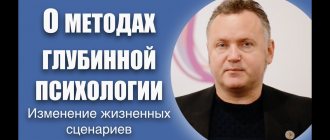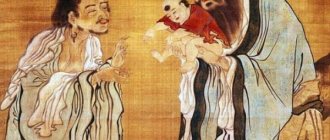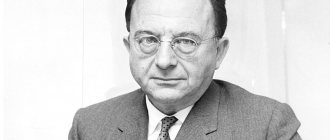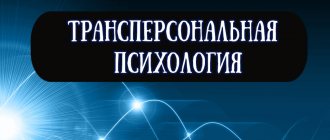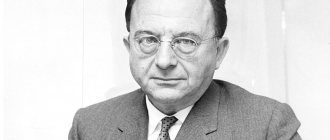Taoism is one of the oldest religious and philosophical teachings. It originated in Ancient China and gradually absorbed all the accumulated knowledge about nature and the surrounding world. Some key concepts (such as Tao and yin-yang) are known to most people. But to understand the essence of Taoism and know its meaning, it will take many years. We will briefly consider its main ideas, as well as the history of its origin and development.
Features of the teachings of Taoism
The date of origin of Taoism is approximately the fifth century BC. The concept combined the features of religion and philosophy. Tao jiao is treatises, the study of existence, gaining knowledge about the Universe, and Tao jiao is belief in higher powers and carrying out spiritual practice. But the division is practically imperceptible, so Taoism is considered as a set of aspects. There is no God in the teaching, there is only Tao. This term refers to the Universe, the path to its achievement and self-improvement. The goal of any monk who professes this philosophy is to merge with the Tao.
Taoism
Confucianism has several similar definitions. But in this teaching, Tao is called the rules of humanism and moral principles. A person must improve: study exact sciences, music, writing, and various sports.
Taoism views nature as the beginning of existence. Adhering to this philosophy, a person must obey natural laws, forgetting about his own “I”.
There is no need to interfere with the measured flow of life; it is better to submit to it.
Basic ideas of Taoism
The main concept in Taoism is Tao. This is a world law that determines the existence of all things from the moment of origin to the moment of disappearance. Everything in our world is subject to Tao: things and people, thoughts and ideas, the Moon and the Sun. Even the Universe itself has a beginning and will someday come to a natural end, obeying this principle.
It is believed that if a person can understand the Tao, he will achieve immortality. And the process of this knowledge involves the application of efforts in two directions:
- Nourishment of the soul. We are talking about spiritual harmony, overcoming passions and desires for the sake of comprehending the Tao.
- Nourishment of the body. This refers to the attitude towards food, breathing, exercise, sex and other natural needs. Taoism requires adherence to a strict diet in everything, and the ideal is a complete transition to spiritual sources of nutrition and refusal of ordinary food.
In Taoism, it is believed that these two elements are sufficient to understand the Tao and achieve immortality of soul and body in this world.
Another important concept is De (virtue or morality). It does not imply targeted, highly moral influences on the world around us. Within the framework of this teaching, the strength of spirit is implied, which must be present in a person so that he can cognize the Tao.
Another important concept of the teaching is Wu-wei - non-action . This is a refusal to engage in purposeful activities that may disrupt the natural course of events. Wu wei does not imply passivity. Its essence is that a person must understand when to act and when to remain inactive. Taoists consider this idea correct even in the field of government, arguing that the best sovereign is the one who does nothing at all. He holds office in order to inspire the people, personify state power and prevent unrest.
Founders of religion
Taoism was finally formed only in the second century AD. The basis for the teaching was the shamanism of the southern Chinese provinces, the magical rites of the Qi region and the philosophy of the northern regions.
There are only three founders:
- Huang Di or "Yellow Emperor";
- Lao Tzu;
- Zhuang Zhou.
There are several legends about the founders of Taoism. One of them talks about Emperor Huang Di. His biography is shrouded in secrets, and the tomb contains only his clothes. It is believed that the emperor himself ascended to heaven.
But the main founder is the sage Lao Tzu. He was the first to combine all the components into a single teaching and wrote the book “Tao Te Ching”. This treatise later became the basis for the development of philosophy.
There are several theories about the origin of Lao Tzu. His mother was simultaneously touched by the rays of the sun and the moon, and then she conceived the future sage. According to the second option, the woman swallowed a shard of rock crystal. And she carried the child for several decades, so he was born already elderly. Because of this, he was given the name Lao Tzu - “Old Baby”.
There is evidence of the sage’s personal acquaintance with Confucius. Lao criticized the philosopher for being too active in his social life. That is why he founded his own teaching, where the basic ideas were completely different. In short, Taoism is a contradiction of Confucianism.
The further fate of the sage remained unknown. He either lived out his years in Tibet or in India, where he adopted Buddhism. There is also an opinion that he went to the lands that later became Kievan Rus. Lao Tzu's book was supplemented by Zhuang Zhou with his treatise. He lived in the 4th-3rd centuries BC and also studied Taoism.
Stages of development of Taoism
In the first century BC. e. Schools of Taoism began to appear. Over time, they changed, and some merged into one institution. Main institutions:
- School of Heavenly Mentors;
- Quanzhen;
- Maoshan;
- Lingbao.
The School of Heavenly Masters, or “Five Buckets of Rice,” was the first to teach the basics of Taoism. It was founded by patriarch and mountain hermit Zhang Daoling. Over time, it was divided into southern and northern. But then the establishment became united again, its name changed to Zhenyi.
In the southern regions, in the times after the dominance of the Mongol tribes, the Quanzhen school opened. Maoshan or Shangqin existed until the 14th century. Here students practiced communication with spirits and higher powers. Lingbao focused on meditation; it was more like a Buddhist school.
In the fifth century, the number of adherents of Taoism increased: they were joined by hermits who dreamed of longevity. The doctrine at this time turns into religion, and its goal becomes the desire for immortality. At that time there were only 250 treatises with basic definitions, principles and concepts. And today there are more than 1,500 books and essays.
Basic ideas of Taoism
Taoism is not considered a traditional religion. It is based on the principle of equality of humanity. Thanks to this, philosophy was studied by different categories of people. But in the Middle Ages, monasteries were built where only enlightened monks were allowed.
In the 17th century, the Qing dynasty ruled, which encouraged the persecution of philosophy. The rulers considered the teaching to be pseudoscience, so they ordered to burn books, destroy monasteries, and punish supporters of Taoism. Rehabilitation began only in the 60s of the last century. But modern philosophy is different. It was based on meditation and magical rituals.
The teaching became famous in the West thanks to its unique martial arts, breathing exercises, and Feng Shui.
The connection between Taoism and Confucianism
Confucianism is an ethical-social, moral, political, religious and philosophical teaching developed by Confucius at the turn of the 6th and 5th centuries BC. e. This was a difficult time in the history of Ancient China, so the main task of the teaching was to ensure the harmonious existence of society and the state. It pays a lot of attention to such points as respect for government authority, compliance with laws, and reverence for traditional values.
It is believed that the founder of Taoism, Lao Tzu, was familiar with Confucius and was interested in his teachings. But over time, he realized that the ideas of Confucianism were alien to him. This understanding intensified as he became disillusioned with Chinese statehood. This was the reason that he created a new teaching , which in many respects was the complete opposite of Confucianism. He outlined the main ideas in the famous treatise “Tao Te Ching” (Book of Path and Virtue).
Thus, Taoism is initially in opposition to Confucianism. And the main disagreement between them lies in the interpretation of the concept of “Tao,” which is basic for both teachings. For Confucius, Tao is a person’s path, his personal choice made for the sake of achieving the common good. In Taoism, the path is an absolute, a natural state of affairs that does not depend on a person. While Confucianism preaches respect for state authority, Taoism believes that the state should not interfere in people's lives.
Forms of manifestation
Taoism was divided into several forms. This happened because it was necessary to satisfy the issues and interests of different sectors of society. There are three forms of manifestation of teaching:
- mystical;
- scientific;
- philosophical and ethical.
Basic concepts of Taoism
The poor went to the monks to receive advice and predictions. This was the mystical side of Taoism. Thanks to this influence of the enlightened, ordinary peasants were instilled with moral values and norms of behavior.
The monks constantly tried to find the secret of immortality. There were legends that Chiang Taolin, one of the supporters of Taoism, found a recipe for the elixir of eternal youth. But later it was lost, although the monk himself was worshiped for a long time and it was believed that he lived as a hermit in the mountains.
As a result of the following searches and studies of alchemy, many useful objects for humans appeared - a compass, gunpowder, porcelain, glass, and battering tools. The first theories about the origin of people and other living beings, heaven and earth also appeared thanks to the constant thoughts of the monks.
Ethics and philosophy were created on the basis of Taoism. The teaching helped the educated segments of the population to express themselves. But at the same time, universal equality was observed at the spiritual level. With the help of the philosophy of Taoism, it was possible to explain the essence of human existence and worldview, the purpose of life.
What is Tao?
As we have already found out, the word “Tao” is translated as “path”. In Confucianism, this word refers to a person’s life path. In Taoism, Tao personifies the law according to which every object, every phenomenon and every living creature exists. This is the absolute to which all objects and phenomena known to us are subject. Tao implies that the whole world is in continuous motion - everything changes, everything has a beginning and an end, and only Tao is eternal.
Conventionally, Tao can be considered the supreme deity in Taoism, although this is an incorrect statement, since Tao is not a god. Tao is the fundamental principle, the main principle and law, indicating the direction of movement of all things, including the Universe.
The greatest happiness for a follower of Taoism is knowledge of the Tao and unity with it. It is believed that this state can be achieved only with strict adherence to the rules prescribed by the teaching, on the spiritual and physical levels. The need to observe them is explained by the fact that divine spirits and evil demons fight for the soul of every person. Some actions feed spirits, others - demons. And the teaching prescribes exactly how one should behave in order to strengthen spirits and weaken demons.
Main postulates
The universe in Taoism is the macrocosm, and man is the microcosm. Monks are not afraid of death, since it only means union with the Tao. Teaching does not take on personalities, shapes or colors. All worldly joys are perceived as emptiness, and a person should only observe what is happening, but not interfere.
At the same time, the enlightened try to instill in others the ability to distinguish between evil and good, through meditation to look into their inner world and achieve harmony with others. You can comprehend the Tao only if you follow the ancient Chinese postulates:
- saturation of the soul;
- nutrition of the body;
- wu-wei.
Basic forms of Taoism
The nourishment of the soul was to maintain its qualities. You cannot feed your demons, as this distances a person from happiness. Monks and all who study Taoism should eat freely. You need to follow diets and fasts. And the ideal option, indicated in the treatises, is to saturate the body only with dew from plants and your own family. Be sure to perform physical and breathing exercises. Sexual relations are allowed, but only with one permanent partner.
Wu wei in Taoism is non-action, that is, non-interference in the changeability of the universe. The concept consists of two hieroglyphs: Wu - non-existence or absence, Wei - action, implementation. A person should not do something purposefully, since interaction with cosmological portals can lead to bad consequences.
Understanding the Tao is not easy. You will have to forget about selfishness, self-worth and personality, relate yourself to the world around you and become part of it. Even while doing simple things, you need to stop the mental flow.
Tao
Tao... Nowadays, this term is quite widely used in a variety of fields of activity, and the term “philosophy of Tao” is becoming increasingly popular. But, unfortunately, one often observes a distortion of its true understanding. To understand what it means, it is necessary to turn, first of all, to the Taoist Tradition, because it is at its core that lies the desire to comprehend the Tao and the true nature of reality.
Tao is the root cause and source of all things. Tao is the Primordial True Reality, existing as if beyond the boundaries of our reality, our space, time and, in general, any categories and forms with which we are accustomed to describe the world around us. This is precisely what the first line of the Tao Te Ching indicates: Tao is not a path that can be passed (named, described in the usual categories) - see this below in more detail.
However, existing beyond the ordinary, Tao permeates the entire Universe, exists everywhere, in everything and always, defining the principle of existence of everything else, which is, in fact, only one of the manifestations of Tao. Due to its “otherworldliness,” Tao cannot be understood by the ordinary human mind/consciousness, since the latter is limited, while Tao is limitless in understanding and manifestations.
Therefore, any attempt to explain with the help of the mind what is beyond its limits is meaningless and doomed to failure in advance. This concept is well illustrated in the movie "The Matrix" - you cannot understand what the Matrix is by being inside it.
A reasonable question arises: how then can one comprehend Tao if consciousness is powerless in this matter? In fact, our consciousness is potentially as limitless as Tao, and limitations are imposed on it by the reality in which we live (the Post-Heavenly aspect of existence). Since childhood, we see this world, interacting with people around us, form our worldview, our personality, Ego, and gradually get used to perceiving reality through the prism of the picture of the world that is already in our head. This is the limitation. And to comprehend the Tao, you need to move away from it, “awaken”, cleanse your consciousness of the After-Heaven, returning to the clarity and purity of your Primordial consciousness/Primordial Spirit.
How to do it? The answer to this question lies in another meaning of the term Tao - Tao, as a Path, a method, a set of practices for transforming a person’s body and consciousness and gaining them... Tao (as the Highest Truth, the Primary Source). Already in this dual understanding of the term Tao, a distinctive feature of Taoist philosophy is visible: the rejection of clear, unambiguous concepts that once again limit human consciousness. Instead, hints and pointers are used that can move a person towards a correct understanding, but only if he is not afraid to lose the “solid ground” of established concepts and stops clinging to the “old slippers” of the usual worldview.
The philosophy of Tao lies in the understanding of its infinity, the impossibility of enclosing it in predetermined frameworks and rules. Therefore, she takes a very flexible approach to improve a person's self-improvement and explain various concepts. At the same time, it is always necessary to remember that what is manifested and expressed is not the final Truth, but only a way to indicate the direction of movement necessary for the practitioner here and now, at a given level of skill. And here it is very important over time not to mistake “the finger for the moon it points to.”
Remember that any unambiguous concept (about the origin of the world and man, about what the Path, practice, etc. should be) only limits a person, since the Highest (Tao) cannot be limited and unambiguous.
Thus, if we do not get attached to words, then any word can be used for a deeper understanding of Tao. But if we cling to words, then we will never come to the truth, since we will always be limited by them.
Let us consider the hieroglyphic writing of the Tao, since it already contains a deep philosophy, the understanding of which is very important for the correct practice of the Tao. The hieroglyph consists of 2 parts: left and right. The right part, in turn, can be divided into 2 parts: upper and lower.
The upper right part means “one Universe”; the two lines at the top symbolize Yin and Yang. This means that the entire Universe (Universe) consists of two polar forces and, at the same time, remains a single whole. The lower right part means “myself” (自), and if you look at it carefully you can see that the hieroglyph is a rectangle with three sectors inside. But, according to the Taoist tradition, a person (“myself”) has three Treasures: Jing, Qi and Shen, as well as three most important energy centers - dantian (lower, middle and upper), which represent different levels of the reality of human existence. It is this trinity that the hieroglyph “I myself” symbolizes, which must be realized through the practice of internal alchemy.
At the top of the rectangle is a vertical line, which is located exactly in the middle and is the connecting link between the upper and lower hieroglyphs. It means that when the 3 Treasures are united and when the central (middle) channel of Zhong Mai opens and the “unity of the three original ones” is achieved, a “spiritual channel” opens, making it possible to understand the “single Universe”. From this moment on, man and the Universe become one. After all, only by realizing the state of the One, a person comprehends his True Nature, which is the goal of his spiritual development.
By combining the lower and upper hieroglyphs, we get a new one, meaning “head” (首) and symbolizing the fact that the whole world is “in our head,” i.e. is a creation of our mind/consciousness. This statement is difficult to even accept, let alone comprehend its full depth and meaning.
The left side of the Dao character is translated as “movement”, “go with stops”, “path” (辶). This reflects the second aspect of the term Tao, as the path of progress towards understanding the True Nature of the universe.
Having asked the question “what is the meaning of life?”, a person begins to look for a Path, a tradition that could help him find the answer. If the Path is chosen correctly, then the neophyte begins, first of all, to study himself, to develop his physical, energetic and spiritual sides. Continuing his studies, he understands that the division into “I” and “Nature” is a Post-Heavenly conditioning. And therefore, he follows the Path of uniting particulars to the One, moving from “branches to the root-primary source”, follows the reverse movement from the manifested to the original. In the course of correct practice, the three external forces (Heaven, Earth and Man) and the three internal primordial forces (Jing, Qi and Shen) are united, as a result of which the practitioner becomes an enlightened being who is devoid of any obscurity and comprehends the Tao. One who has reached this level of realization in the Taoist Tradition is called a True Heavenly Immortal.
Now let's turn to one of the most important Taoist treatises, which is revered in all Taoist schools. This is the Tao Te Ching (a treatise on Tao and Te), and in §1 the first line reads as follows:
道可道非常道– which reads as “DAO KE DAO FEI CHANG DAO.”
It is not so easy not only for us, but also for the Chinese to understand what this phrase is, but we will still try to analyze it a little. “Tao” (道) here means “The Way”, which should be known and comprehended through internal practice, as well as the process of movement itself. "Ke" (可) means "can" or "possibility". “Fei” (非) means “not”, i.e. negation. "Chan" (常) means "constantly". Thus, you can try to create possible combinations yourself, taking into account synonymous words.
After several attempts, you can see that not everything is so simple and that a simple literal translation here will not clarify much and what is needed first of all is a translation that has a semantic understanding of what is said in this phrase. And since each translator has his own understanding and priorities, translations can be different and each of them can be situationally correct in its own way. Below are several common translations of the phrase “Dao ke Dao fei chang Dao”:
- The path that can be walked is not a permanent path. (Torchinov)
- In the Path that one can follow, there is nothing of the eternal Tao-Path (Torchinov)
- The Tao that can be expressed in words is not the permanent Tao. (Yang Hing Shun)
- A Path that ends in a goal cannot be the Eternal Path. (Kuvshinov)
- Chosen of the Tao - The Tao is not permanent. (Yu Kang)
- The Constant Path is made up of the possibility of choosing a Path and the impossibility of choosing a Path. (Vinogrodsky)
- The Tao that can be expressed is not the permanent Tao (Lukyanov)
- Truth can be expressed in an unusual way. (Wanderer)
Another difficulty in translation lies in the fact that in the ancient Chinese language there are no declensions, conjugations, specific tense and gender, as well as a frequent absence of conjunctions (as if, like, yes, even, barely, if, same, and, or, so, how, somehow, when, whether, or, etc.). All this gives a very large scope for possible translation, where the meaning of the translated text can be either similar or completely different. Therefore, it should be understood that, in principle, there cannot be a perfectly correct translation here, just as when the Chinese themselves read the original, the text can be understood very differently. Therefore, all Traditional Schools talk about the importance of a living Teacher who can clarify all the nuances of theory and philosophy and how they are understood in a particular School.
As a result, it should be remembered that in Taoism there are many different Schools with their own methodologies and philosophical basis, and they cannot all be lumped together, naively believing that everything should be the same everywhere. So, for example, what is correct in the Zheng Yi School may never be used in Quan Zhen and vice versa. And in the School of Wang Chongyang and Zhang Boduan there were completely different approaches and views on where to start practice, despite the fact that both of their Schools go back to Patriarch Lü Dongbin. And such examples can be continued for a very long time.
And since our people are completely unfamiliar with the history of different Taoist Schools, having learned the position of one School, they immediately naively believe that this should be the case with others (this applies not only to practice, but also to philosophical views on the world, on the person, on the interpretation of various terms, etc.) and begin to fanatically prove to others that they are unequivocally right, not realizing that this only indicates their narrow-mindedness.
Below we present several fragments from Lao Tzu’s treatise “Tao Te Ching” to try to hear and understand his vision of the Tao:
§ 14
Translation by E. Torchinov:
I look at him and don’t see him - I call him the subtlest. I listen to him and don’t hear him - they call him the quietest. I catch him, but I can’t grab him - I’ll call him elusive. This triad cannot be explained in words: it is chaotic and united. Its top is not illuminated, its bottom is not darkened. It stretches and curls, but you can’t name it; she returns to the absence of existence. Therefore they say: formless appearance, immaterial image. That's why they say vague and vague things. I don’t see the beginning when I walk towards her, I don’t see the end when I hurry after her. I hold on to the ancient Path-Tao and thus control what exists now. I can comprehend the ancient principle and call it the foundations of the Tao-Way.
Translation by Yang Hin Shun:
I look at it and don’t see it, and therefore I call it invisible. I listen to it and don’t hear it, so I call it inaudible. I try to grab it and can't reach it, so I call it the smallest. There is no need to strive to find out the source of this, because it is one. Its top is not illuminated, its bottom is not darkened. It is infinite and cannot be named. It returns to nothingness again. And so they call it a form without forms, an image without a being. That is why they call it unclear and foggy. I meet him and don’t see his face, I follow him and don’t see his back.
Translation by A. Lukyanov:
I look at him - I don’t see him, I call him “invisible”. I listen to him - I don’t hear him, I call him by the name “silent”. I catch it - I don’t find it, I call it by the name “hidden”. These three cannot be differentiated, because they are mixed and form one. Its top is not light, its bottom is not dark, it continuously curls, [it] cannot be named. [It] found refuge in the immaterial. This is an image without an image, an image without flesh. This is the foggy mixture. I walk towards him but I don’t see his face (head). I follow him - I don’t see his back (tail). Only by unswervingly following the ancient Tao in order to rule the present one can one cognize the ancient principle. This is the weft (guiding thread) of Tao.
Translation by B. Vinogrodsky:
You look at him without seeing him. Call the name: “Abstracted.” You listen to him without hearing him. Name it: “Sparse.” You grab it without holding it. Name it: “The Subtle One.” This trinity cannot be determined by asking questions. Causality: By mixing, they realize oneness. When moving up it is not light. When moving down it is not dark. Like a slipping thread. It cannot be defined by name. The return to the state of the absence of things is repeated. It is defined as: Trembling and shimmering. You move towards him without seeing his head. You follow him without seeing his back. Use the path of antiquity to control the presence of this moment. Be able to know the beginning of antiquity. This is defined by: Guiding thread.
§ 25
Translation by E. Torchinov:
Here is a Thing accomplished in Chaos, born before Heaven and Earth! O silent one! O formless one! You stand alone and do not change, you surround everything that exists and do not perish! You can be called Mother of the Celestial Empire. I don’t know your name, but, denoting it with a sign, I call you the Way-Tao. Making an effort, I call you Great.
Translation by Yang Hin Shun:
Here is a thing that arises in chaos, born before heaven and earth! O silent one! O formless one! She stands alone and does not change. It works everywhere and has no barriers. She can be considered the mother of the Celestial Empire. I don't know her name. Denoting it with a hieroglyph, I will call it Tao.
Translation by A. Lukyanov:
There is something that forms chaos, living before Heaven and Earth. Silent! Empty! Stands alone, does not change, revolves within itself tirelessly. You can consider him the Mother of Heaven. I don't know his name. I give him a nickname - I call him Dao. I choose a name for him - I call him Great
Translation by B. Vinogrodsky:
The thing in existence is formed from a formless swirl. Born before Heaven-Earth. In soundlessness, in serenity. Stands independently, without changing. Moves in cycles without dying. This is how the generative principle can be realized in the Celestial Empire. My essence does not know this name. Let's denote it with the sign “Path”. Trying to find a name for him, let’s define him as “great.”
§ 21
Translation by E. Torchinov:
Tao is such a thing: unclear and vague, faceless and foggy. O obscure one! O vague one! There are images in your center. O faceless one! O foggy one! There are things in your center
Translation by Yang Hin Shun:
The Tao is vague and uncertain. However, its vagueness and uncertainty contain images. It is foggy and uncertain. However, in its vagueness and uncertainty, things are hidden.
Translation by A. Lukyanov:
Tao is something vague, indistinguishable! Oh, indistinguishable! Oh, foggy! It contains images within. Oh, foggy! Oh, indistinguishable! Things are contained within Him.
Translation by B. Vinogrodsky:
The path is realized in things only as a flickering, only as a flutter. Here's a flutter, here's a flicker. And at the core is the presence of an image. Here's a flicker, here's a flutter. And at the core is the presence of a thing.
Pillars and Treasures
There are only eight methods, or pillars, of Taoism. They must be followed in order to improve your health and achieve harmony with the world around you. They are as follows:
- philosophy;
- update;
- nutrition;
- forgotten food;
- treatment;
- sexual wisdom;
- perfection;
- success.
The first pillar is necessary for knowledge of social and natural laws, the essence of existence and the purpose of life. Renewal means conducting meditations and practices to improve health. As for nutrition, you need to completely abandon meat and other animal foods. Forgotten food means that during strict diets and fasts you cannot eat at all. You will have to live exclusively on the water.
Extraction is the distribution of energy throughout the body through acupuncture and massage manipulation. Sex in Taoism is considered only as a method of strengthening sincere feelings and one of the types of therapy. The seventh pillar is excellence. A person must constantly develop and look for new buildings. And success means setting and achieving goals, fulfilling plans.
Lao Tzu called the three treasures of Taoism:
- qi;
- jian;
- Shen.
The first treasure is the energy of mercy, life and love. Jian means rational economy. This also applies to people’s appearance. You should not pay much attention to your clothes and hairstyle. It is enough to be neat and clean. Shen is a symbol of the intelligent spirit.
Law of chain reaction
If you allow your negative feelings to play out, one unpleasant experience will lead to another. If you live indulging in daydreams and daydreams, then reality will be supplanted by the illusory world of fantasy. It can be difficult for a person to stop the flow of his negative and unproductive thoughts, because... he develops the habit of worrying, worrying, suffering, dreaming, i.e. to escape from reality, from actively solving problems. To what you give more energy, there will be more. The thought to which you give your time acts like a magnet, attracting its own kind. It’s easier to deal with one disturbing thought than a swarm of obsessive thoughts. In the process of our communication with other people, we tend to adopt their moods through emotional contagion.
Masculine and feminine principles
The Chinese Yin-Yang sign, which has already become national, has been known for a long time. It was first depicted in the 4th century BC. Taoist monks drew a circle divided into two parts. One characterized the feminine dark principle, and the second – the masculine light.
It was believed that these two concepts could not exist separately. The fate of man depended on them. Likewise, a person’s fate cannot be exclusively light or dark. The feminine is characterized by balance and calm, and the masculine by power and activity. It's like two opposing elements. But in nature they cannot exist without each other, just like the components of the Yin-Yang sign.
If in a person one of the principles prevails over the other, then his fate may turn out wrong. It is believed that such people will not be able to understand the Tao, so they should not begin training.
